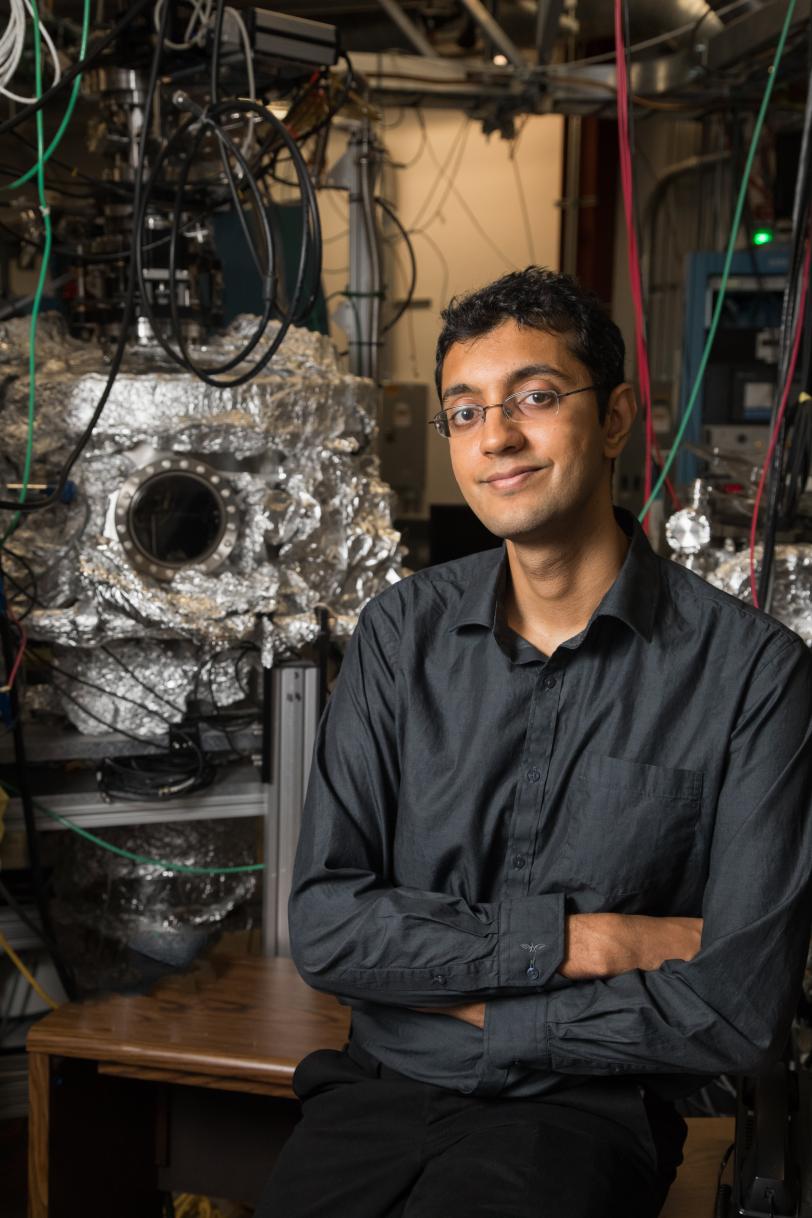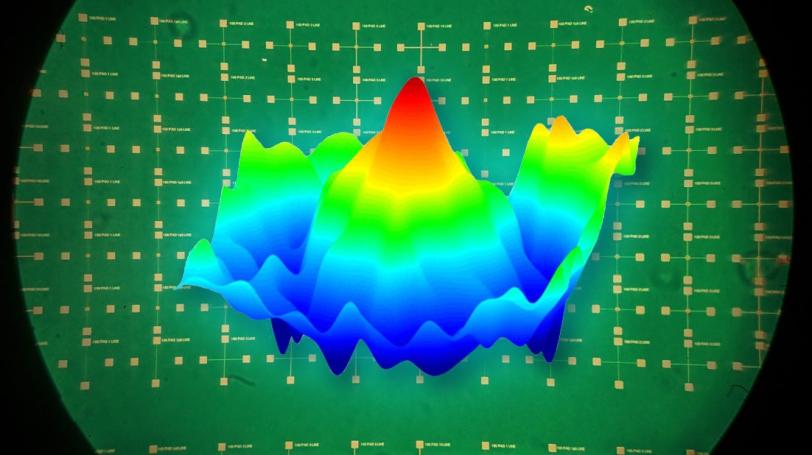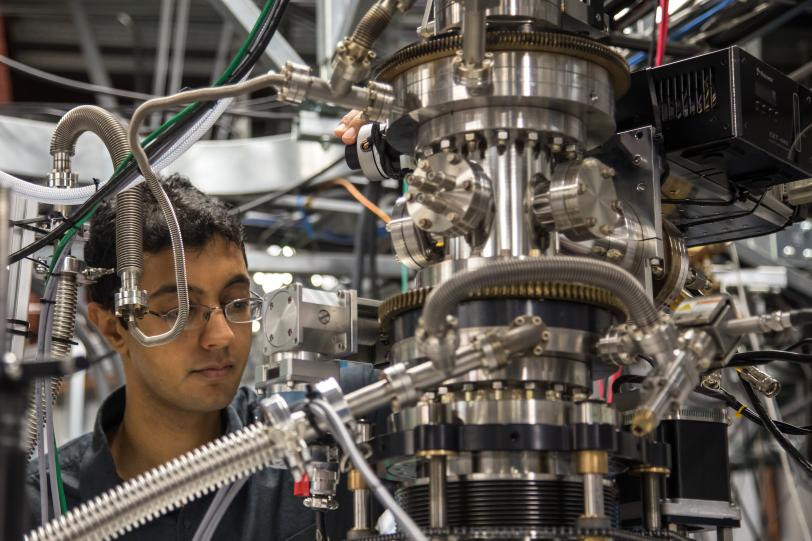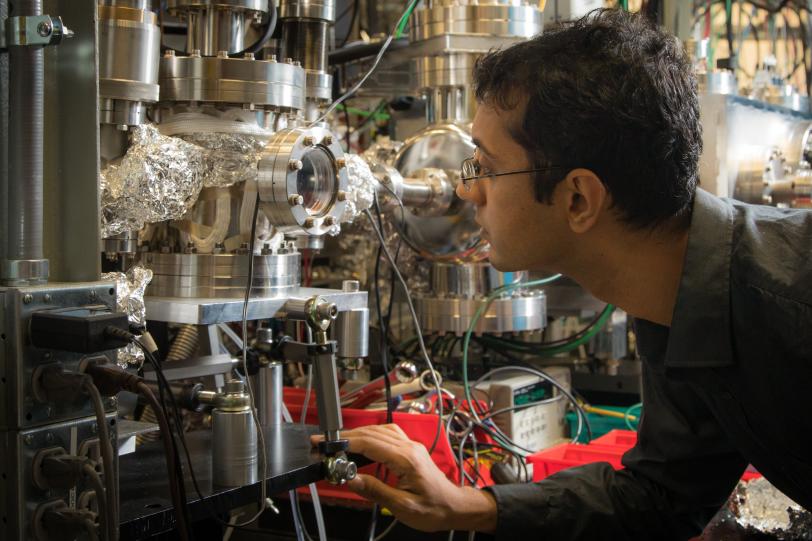Hewlett Packard’s Suhas Kumar Wins 2017 Klein Award
Kumar’s work, carried out in part at SSRL, explains how memristors work – a new class of electronic devices with applications in next-generation information storage and computing.
By Manuel Gnida
Suhas Kumar, a postdoctoral researcher at Hewlett Packard Enterprise (HPE), wants to develop next-generation information storage devices and better computers. His particular interest is a new type of electronic device, called a memristor, that could make future computer memories faster, more durable and more energy efficient than today’s flash memory.

Now, his work has been recognized with the 2017 Melvin P. Klein Scientific Development Award of the Stanford Synchrotron Radiation Lightsource (SSRL) at the Department of Energy’s SLAC National Accelerator Laboratory. Based on experiments at SSRL and elsewhere, he and his colleagues succeeded in explaining how memristors work on the atomic level, which is a crucial step toward commercializing these devices.
Kumar will receive the award at the Sep. 27-29 SSRL/LCLS Annual Users’ Meeting at SLAC, where he will also give a talk about his research.
Memristors typically consist of a piece of transition metal oxide sandwiched between two electrodes. Applying a voltage pulse to the electrodes switches the device from low to high electrical conductivity or vice versa. The two states represent the two values of a “bit,” the basic unit of information in digital computing. Since no external power inputs are needed to keep the device in a switched state, it is suitable for use as “non-volatile” computer memory and could become an alternative for flash memory.
Until recently, details of what exactly happens inside memristor materials were controversial. To find out more, Kumar started collaborating with researchers at HPE, Stanford University, SSRL and the Advanced Light Source (ALS) at DOE’s Lawrence Berkeley National Laboratory. The team developed new experimental tools that make use of SSRL’s and ALS’s powerful X-ray synchrotron light to map how atoms move and electrons redistribute themselves during switching.
The researchers determined, for instance, that a voltage pulse pushes oxygen atoms in memristor materials out of conductive paths, making the materials even more conductive. Reversing the voltage pulse sucks the oxygen back in, which increases the materials’ resistance. In addition, Kumar’s team looked into how memristors fail, which resulted in ideas for making better ones.

“Suhas has exploited synchrotron radiation in creative ways to understand the fundamental behavior of new devices and materials,” said Kumar’s former doctoral advisor Yoshi Nishi, a Stanford professor emeritus of electrical engineering, in a nomination letter for the Klein award. “He also successfully translated those results into real-world applications.”
In fact, the results helped Kumar and his colleagues to build memristors that lasted about a billion switching cycles – a thousand times longer than previous devices and significantly longer than today’s flash memory devices. The researchers have also recently shown that a fundamental understanding of memristors can benefit the development of “chaotic computers.” This new computing architecture has the potential to efficiently solve problems that can easily overwhelm traditional digital computers, such as accurate weather prediction.
“The award means a lot of encouragement to me,” Kumar said. “It recognizes our continued efforts of using synchrotron light as a unique, potent tool to probe nanoelectronics that could enable an entirely new class of computing systems. SSRL has been very important for my work. Its ever-evolving cutting-edge experimental stations, its brilliant staff and its user support system have bolstered my inspiration and that of my group.”

The Klein award is an annual recognition of outstanding accomplishments by up-and-coming investigators who used SSRL for their research. Established in 2006 by the SSRL Users’ Executive Committee, the award honors the late Melvin P. Klein, a pioneer in the field of spectroscopic methods, including X-ray absorption spectroscopy.
SSRL and ALS are DOE Office of Science User Facilities.
Contact
For questions or comments, contact the SLAC Office of Communications at communications@slac.stanford.edu.
SLAC is a multi-program laboratory exploring frontier questions in photon science, astrophysics, particle physics and accelerator research. Located in Menlo Park, Calif., SLAC is operated by Stanford University for the U.S. Department of Energy's Office of Science.
SLAC National Accelerator Laboratory is supported by the Office of Science of the U.S. Department of Energy. The Office of Science is the single largest supporter of basic research in the physical sciences in the United States, and is working to address some of the most pressing challenges of our time. For more information, please visit science.energy.gov.






